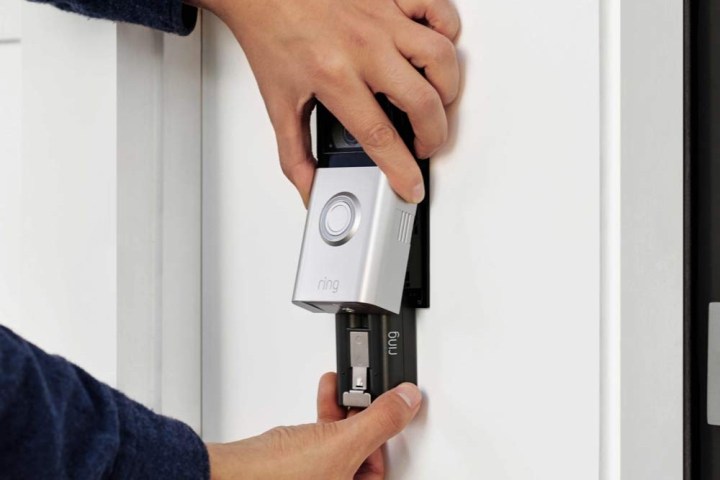Most Ring Video Doorbells are rated to work in frigid weather, but you’ll likely experience technical hiccups as your thermometer drops below 32 degrees Fahrenheit. Regardless of if you’re running a hardwired or battery-powered unit, Ring Video Doorbells aren’t immune to the cold, meaning you’ll want to pay close attention to them during the winter (along with all of your other smart home gadgets).
Whether you’re getting ready to go on vacation or just need to get through a few days of extreme cold, here’s a look at how to improve Ring Video Doorbell performance in the winter.
Take note of these temperatures

Ring has designed its lineup of products to work in various weather conditions, including rain and snow. But when it comes to cold weather, there are a few important temperatures to make note of.
- At 36 degrees Fahrenheit, your Ring battery may deplete its charge faster than normal.
- At 32 degrees Fahrenheit, your battery might have trouble charging. Ring also notes that hardwired devices may have trouble charging at this temperature.
- At -5 degrees Fahrenheit, your battery might disconnect until the device senses warmer temperatures. Depending on your model, it might also go into Sleep Mode.
Pay attention to the weather forecast and make note of any temperatures below those listed above. If you’re planning to go on vacation, consider having a few backup batteries charged and a trusted neighbor on standby in case they need to perform a replacement.
Bring in your Ring Video Doorbell if it gets too cold

If you happen to be home when the weather is getting nasty, you may want to disconnect your Ring Video Doorbell and bring it inside. You could also keep it outside until it starts acting up, then bring the unit inside to warm up. Keep in mind that it’s not just the battery that needs to warm up, but also the doorbell itself. While it’s inside, be sure to connect it to your USB charger to replenish its battery.
Use a fully charged battery with your Ring Video Doorbell

It should go without saying, but it’s worth repeating — be sure to use a fully charged battery whenever possible. A battery at 100% charge can better handle the cold weather and will get you more mileage before needing to come inside to get plugged in or replaced with another battery. If you notice the temperature will be dropping in the coming days, use that time to replenish your battery levels and prepare replacements.
The Ring Video Doorbell might impact your chime in the winter

If you’re using a hardwired Ring Video Doorbell, there’s a chance that your indoor chime will start chirping without any input. Some users report this happening when the cold is accompanied by extreme wind or snow. Traditional doorbell chimes can often start buzzing when there are large swings in temperature, as the metal connections start to contract or expand at a rapid pace.
To fix this problem, take the cover off your chime and look to see if any wires are loose. If they are, turn off the power to the device at your fuse box, then use a screwdriver to tighten the connections. The issue may also resolve itself when temperatures return to normal. If you’re still having trouble with it buzzing at random, consider hiring a professional electrician to take a look.
More tips/tricks to improve the performance of your Ring Video Doorbell

From turning off motion notifications to setting up motion zones, now is a great time to take a look at other ways to optimize your Ring Video Doorbell. Most of these tips are simple and require nothing more than toggling settings in the Ring app, while others take a bit more legwork (such as syncing it with the rest of your smart home).



